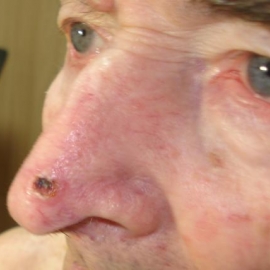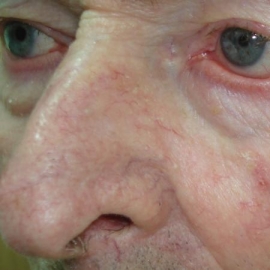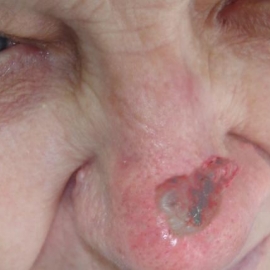SPECIAL CLINIC
FOR LASER
AND
PHOTODYNAMIC THERAPY
Basal cell carcinoma of skin T1-T4N0M0
Basalioma (basal cell carcinoma) is a malignant skin tumor that originates from basal layer of epidermis and skin appendages. It develops on the skin sites which have potential to form hair follicles. 80% of basaliomas develop on the head and 87% of them – on the face. The most frequent localization is the nose area. Basalioma has a site destructive growth: it erodes the sub-layer and surrounding tissues. Basalioma has no metastases into internal organs but can metastize into other skin areas. In the area of the eye orbit, behind the ear folds, and external auditory canal basalioma can grow deep to the periosteum and the dura mater of brain, that leads to death.
The localizations which are considered difficult for treatment include the area of the medial eye corner and eyelids, wings of the nose, nasolabial folds, and the auricle. As a rule, surgery and radiation therapy could hardly be provided in these sites or it leads to severe anatomic physical disorders and marked deformity. In case of small tumor size surgical laser treatment may achieve good results.
Photodynamic therapy should be regarded as optimal method of treatment, which provides both radical therapy and excellent anatomical physiological and esthetical results in any type of localization and any tumor size.






